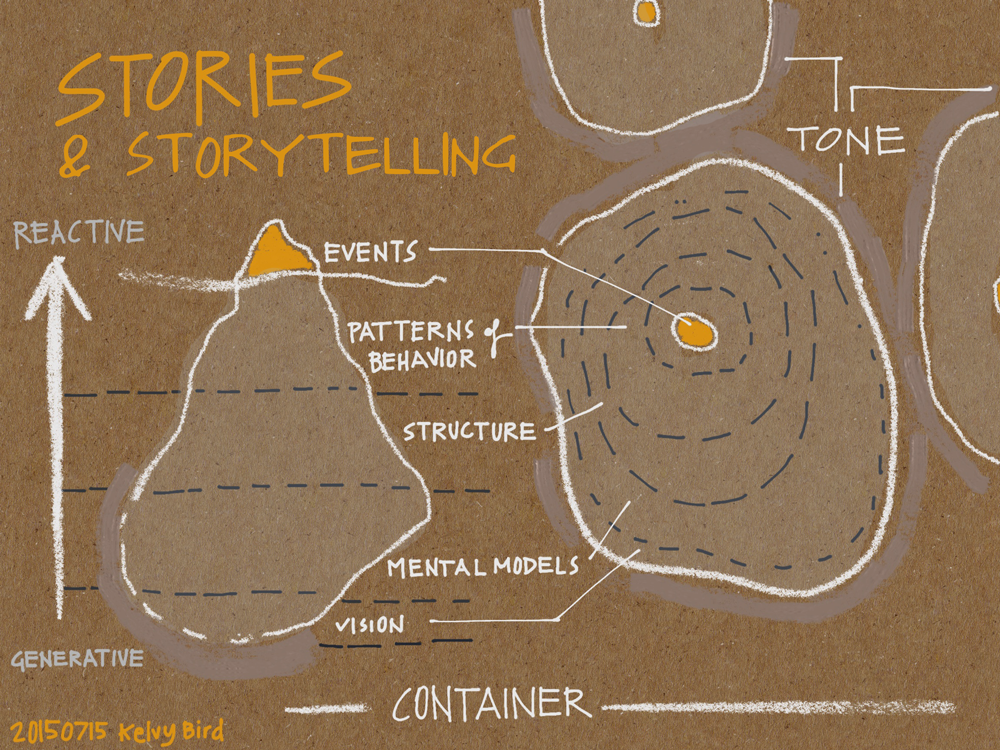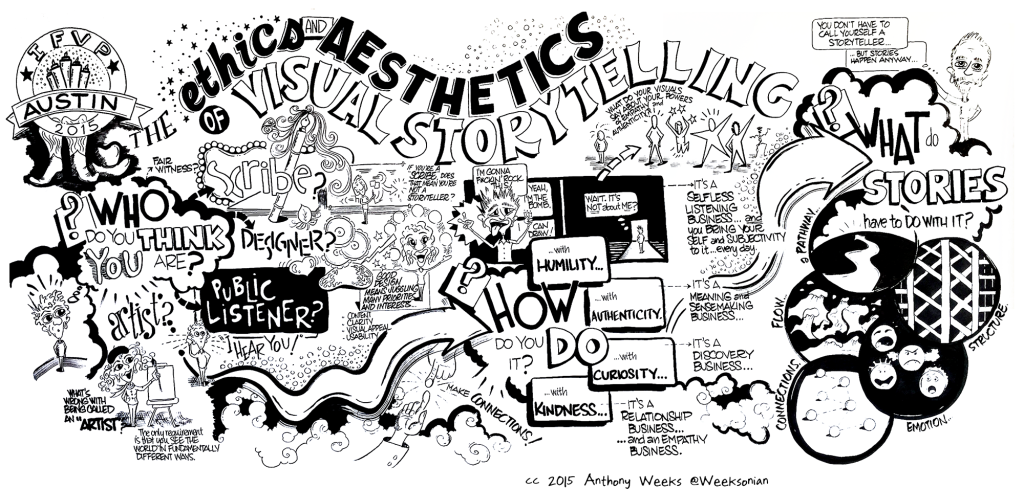Sharing the stage with Anthony Weeks and Liisa Sorsa at the IFVP 2015 conference in Austin, in a session on “The Ethics and Aesthetics of Storytelling” we asked the questions: What is it to be authentic in our work? And what is it, in our times, to visually tell stories?
The following is the original thinking behind my small piece of the pie; the hope is to expand this to add everyone’s contributions, including the 8-9 generously recorded images in multiple languages!
A colleague from China recently explained her culture’s symbol of Yin / Yang as ACCEPTANCE / DESIRE. I have been thinking a lot about how this might translate to the balance of the known (Yang) and unknown (Yin) and how, if, this shows up in our visual language.
I’d like to offer an expanded scale to storytelling that incorporates this inquiry. Referring to the iceberg framework (which you can see in more detail here) as scribes, we usually start at the tip of the iceberg, in words and direct images, revealing tiers downward – if we are lucky and skilled – into patterns of behavior, structure, mental models, and vision. We generally scale down. We start with the KNOWN, because it is more tangible and easier to grasp.
But if we orient instead from the UNKNOWN – the water, the greater surround, the place of ultimate holding – if we think of the container AS the water (think also of a womb) and if from the container we attend to the TONE of a group and work from there, we essentially invert our standard process. We practice bottom-up scribing and open the door to timeless storytelling – much, much larger than only one event, one tip of one iceberg, one story on any one given day.
In thinking this through and drawing the above image, i also saw the visual metaphor of trees, where in the rings, age is revealed in the count. The “one story” is the new life at the very center. The outermost ring contains and protects new life within. Also, there is the old tree-forest saying…. do we choose to focus on one part, one tree, or do we choose to look at the entire range?
Storytelling speaks to multiple ways of seeing; it is a snapshot in time and a growing body of snapshots over time.
Now to the application of this wondering. In the session near Berlin a few weeks ago, I joined a circle of about 40 Presencing practitioners. (You can read much more about this here.) The circle looks like the outer ring of the tree AND functions as water. Circle as social field, from which the structures and content rise.
Drawing on the wall was just the tip of the iceberg. I drew very little compared to the amount of time i was WITH people. I oriented IN the circle, WITHIN the room, OF the people.
I drew as – and only as – was called for by the container.
The void on the far right was the most poignant part of the picture, as it desperately wanted to stay empty. When the topic of earth came up in the room, another image echoed – visually, spiritually, and in content – from a 2012 session attended by some of the very same people in the more recent group. Two walls, years apart, a continued story. And thus revealed: two tips of two icebergs.
This got me really excited. What potential! The thousands of practitioners in our field, in sessions all over the world, drawing chart after chart after wall after board, over days, months, longer stretches of time…
How many icebergs to surface? How many stories within stories within stories to be drawn?
As a supportive, fluid body, the storytelling in our hands seems limitless.
————————–
Anthony Week‘s stunning staging for the conversation:
And Liisa Sorsa‘s equally impressive image from a presenation by Kristin Luck. Yowza!





One comment